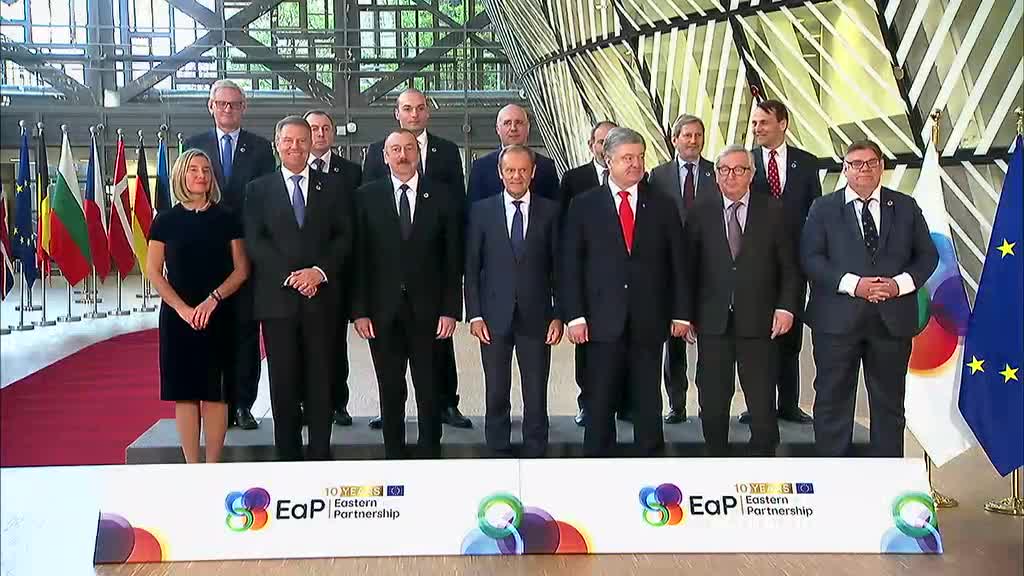Ten years of the Eastern partnership: 20 deliverables for 2020 to reinforce the relation
Joel Diaz-Rodriguez , 3 juin 2019

On May 13th, the European Union celebrated the 10 anniversary of the establishment of the Eastern Partnership with a gathering of the Foreign Minister and representatives of Member States and the High Representative of the EU and the Ministers of Foreign Affairs of the six eastern partners (Armenia, Azerbaijan, Belarus, Georgia, Moldova and Ukraine) in Brussels. This occasion came to reaffirm the commitment of the EU with these countries in order to help them to achieve prosperity and their integration in the international economic system. However, the question that raised this anniversary is if the EU is still an influent actor in the region and if it is still represent a model for these countries.
The Eastern Partnership (EaP) initiative was launched by the European Union in May 2009, with the intention to supplement the European Neighborhood Policy (ENP) with an eastern dimension that would offer more incentives and rewards to six former soviets states. This initiative came to raise the level of the relations with the eastern countries in order to balance the then newly created Union for the Mediterranean with the southern countries. The geopolitics also counted in its launch that was accelerated by the war between Russia and Georgia in 2008 and the gas crisis between Ukraine and Russia in 2009, when the EU realized that the stability and prosperity in its near neighborhood was essential for its own interest.
The official communique of the meeting declared that this unique relationship is based on shared values and joint commitment to the principles of international law that lies at the heart of the partnership. However, this rhetoric has not turned into an influence in the region and proved not effective with its initial objectives. Thus, in comparison with the ENP, the EaP has not changed in a bigger extent, the terms of the relations with the eastern countries and have showed up some doubts about the add value for them. This can be explained, in particular because of the key elements of this relationship has been forged by the EU more than in an agreement with its eastern partners. The EU has not taken into account the needs and internal dilemmas of these countries. Notwithstanding, the general feeling of non-accomplishment of the initial EaP objectives can contribute to the redefinition of this policy given that Russia has shown to be a more effective structural power in this region.
With this aim, in November 2017, took place the last Eastern Partnership Summit, during which all partners agreed on an ambitious work plan, 20 Deliverables for 2020, aiming at bringing tangible benefits to the lives of citizens across the region. The EU endorsed a new result-oriented approach, based on the implementation of the 20 deliverables by 2020 and multilateral engagement through a renewed Eastern Partnership institutional set-up. In this context, cooperation between the European Union and its six Eastern partner countries has focused on working towards stronger economies, stronger governance, stronger connectivity and stronger societies. Between the main achievements of this relationship we have the launch of the Eastern Partnership European School; the strengthened support to small and medium sized enterprises (SMEs) and an increase in trade between the partner countries and the EU; the finalization of an indicative TEN-T investment action plan which foresees 5,500 kilometers of road and rail projects by 2020.
Although these remarkable achievements the EU is losing ground as influent actor in the region and the approach in geopolitical terms has not been ideal. In spite of the new institutional framework that has proved more efficient, resilient and tailored framework as the EU recognizes, EU has not been efficient to provoke changes in countries such Armenia or Georgia and Belarus where more humbles progress has been achieved. In spite of the rhetoric of the shared values, EU is not the model to pursue for those countries as it was ten years after. This is much related with the approach again, to consider those countries in sub-regional terms. Azerbaijan has notably developed its economy and look for a more relevant position in the region, wanting to become a close economic partner of the EU. On the other side, Belarus is a closed country that remain with many human rights and non-democratic institutional framework alongside its close political proximity to Russia with which have a custom union.
Further challenges lie ahead in this 10 years old initiative. It still need to continue with the institutional reforms and the commitments agreed on the side of the six eastern partners but at the same time, EU has to be perceived as credible global actor to continue being a model for them. EU has also to be persistent for the openness and the strengthening of their civil society, young people and the private sector for playing an important role as machine of change in many of these countries.
«Ten years of eastern partnership», actualité of June 1st, available at www.ceje.ch
Joel Diaz Rodriguez. Researcher. Follow at @Joel_DRodri

